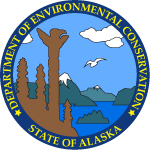| Action Date |
Action |
Description |
DEC Staff |
| 4/7/1990 |
Site Added to Database |
Multiple contaminants.
(Date adjusted from 11/10/1999 for report/query consistency. (Reese))
|
John Halverson |
| 4/7/1990 |
Update or Other Action |
Phase II HTRW report completed. Several areas found to be contaminated with petroleum or other hazardous substances. Several different source areas of concern were identified within the larger site. The landfill area was investigated, a well point was installed and sampled, a geophysical survey indicated about 16,000 square feet of landfill area (excluding the trenches). A pond is adjacent to the landfill. 60-80 drums, some leaking unidentified wastes was identified ~ 150' north of well point #1. |
John Halverson |
| 2/3/1992 |
Update or Other Action |
OHM conducted a removal action for the Corps and submitted a summary report. It indicated that ~ 26 drums of waste were removed from the general area of the disposal trenches. |
John Halverson |
| 1/25/1995 |
Site Characterization Report Approved |
Received the draft-final Phase III Remedial Investigation Report - Cleanup Design, prepared by E&E, for the Corps. It documented low levels of vinyl chloride in groundwater beneath the landfill and solid waste on the ground surface in the landfill and trench disposal areas. |
John Halverson |
| 8/22/1995 |
Long Term Monitoring Established |
Received groundwater monitoring plan documents from the Corps calling for quarterly and semi-annual monitoring from various wells throughout the Wildwood AFS site. |
John Halverson |
| 8/22/1995 |
Update or Other Action |
Received the final baseline human health risk assessment report for Wildwood AFS. It concluded that an unacceptable risk may exist under current or potential future land uses at the landfill area along with some other areas at the larger site. |
John Halverson |
| 4/1/1996 |
Risk Assessment Report Approved |
Received the final Ecological Risk Assessment Report (Tier I) for Wildwood AFS. It recommended either proceeding to a Tier II ecological risk assessment or conducting removal/remedial actions to address hot spots. |
John Halverson |
| 4/18/1996 |
Proposed Plan |
The Corps finalized the proposed plan. Preferred alternatives included: Main Complex tank farm and USTs 5-1 and 5-2 - vapor extraction and air sparging; Maintenance Building, ACS MARS, Quonset Hut and Disposal Trench Area Burn Pit - soil excavation and off-site treatment followed by no further action; Operations Building - excavation and off-site treatment followed by natural attenuation and institutional controls; Landfill and Disposal Trenches - capping, natural attenuation (landfill area only) and institutional controls. |
John Halverson |
| 6/3/1996 |
Update or Other Action |
Received a groundwater monitoring report for tank farm area from sampling in August 1995. It covered the main complex area tank farm and USTs (significant fuel contamination), ACS/MARS facility (low level DRO), Operations Building (DRO and low TEX), Landfill (low level VOCs) and Trench disposal areas (DRO and benzene at burn pit area). |
John Halverson |
| 7/20/1996 |
Update or Other Action |
ADEC received a draft record of decision for the Wildwood Air Force Station FUDS. It called for capping the landfill and disposal trench areas with soil, grading and revegetating the areas and monitoring groundwater. It also called for documenting the disposal site locations in the appropriate land records as an institutional control. Due to challenges over implementing institutional controls and a few other issues, the ROD has not been finalized. |
John Halverson |
| 8/27/1996 |
Update or Other Action |
Received the December 1995 groundwater monitoring event report. It covers the tank farm area and former USTs at the main complex (significant petroleum contamination in GW at and downgradient from tank farm), the ACS MARS facility and Quonset Hut area (low level DRO in GW), the Operation Building (DRO and TEX in GW), Landfill (low level VOCs) and Trench Disposal Areas (DRO, benzene at burn pit area). |
John Halverson |
| 11/22/1996 |
Interim Removal Action Approved |
Received final "Remedial Action Report Interim Removal Action, Wildwood AFS" by Harding and Lawson Associates, October 28, 1996. Conclusions, based on confirmation samples at the end of the removal document that within the Trench Area Burn Pit elevated DRO (1,200 - 18,000 mg/kg) remains in soil. |
John Halverson |
| 8/13/1997 |
Update or Other Action |
ADEC received the workplan for Phase II Remediation, Wildwood AFS, by HLA/Wilder, dated July 2, 1997. Plan called for capping the disposal trenches and landfill areas with a soil cover and revegetating them. ADEC reviewed and commented on the draft workplan, but the comments were not all addressed. No formal approval was given on the plan. |
John Halverson |
| 12/9/1997 |
Update or Other Action |
Received the groundwater monitoring report for sampling done in July 1997. Groundwater levels have dropped significantly, some MWs have gone dry. Sampling was done at the tank farm and former USTs at the main complex (sheen and noticeable fuel odor present in two MWs, free product in MW AP-365; also 1,2 DCA level increased in a downgradient, off-site MW), Landfill (low level VOCs), Operations Building (up to 6 mg/l DRO), Rifle range (260 ug/l total lead) and Firing Range (12 ug/l total lead). |
John Halverson |
| 5/15/1999 |
Update or Other Action |
Received groundwater monitoring report for sampling done in July 1998. Tank farm area (GW level rose slightly, free product found in 3 MWs, GRO increasing in down-gradient MW, 1,2DCA increasing in downgradient MW), Landfill area (low level VOCs, near cleanup levels), Operations building (DRO low levels, need new wells in better locations), Rifle range (total lead and antimony decreased, dissolved lead and antimony N/D), Firing range (total and dissolved lead and antimony N/D). |
John Halverson |
| 9/3/1999 |
Update or Other Action |
ADEC received the Remedial Action Report, Phase II Remediation, by HLA/Wilder, dated August 25, 1999. It documents work done between June 1997 and November 1998. The landfill and trench areas were capped as specified in the workplan. Trench area burn pit still has residual soil contamination that needs to be addressed, either through institutional controls or further cleanup. |
John Halverson |
| 9/12/2002 |
Site Number Identifier Changed |
Workplan changed from X5 to x9. Sequence Number changed to 03 from 01 to accommodate changing the Workplan. The DBA pointed out to the project manager that despite this site being listed as a military landfill, vinyl chloride appears to be the biggest chemical of concern. |
John Halverson |
| 9/12/2002 |
Site Ranked Using the AHRM |
Checked the Multiple Sources box. |
Former Staff |
| 2/3/2005 |
Update or Other Action |
File number issued 2320.38.051 |
Aggie Blandford |
| 6/21/2005 |
Meeting or Teleconference Held |
Staff visited all of the Wildwood sites with the new project manager and the environmental engineer for the site. Staff also observed the ROST/LIF in operation. |
Debra Caillouet |
| 6/15/2007 |
Update or Other Action |
The Declaration of Project Closure Decison for the CON/HTRW project at Wildwood was signed. |
Debra Caillouet |
| 9/22/2008 |
Site Added to Database |
A new site has been added to the database |
Mitzi Read |
| 11/16/2009 |
Site Characterization Workplan Approved |
Final Work Plan, Soil Assessment and Groundwater Monitoring of Non-Tank Farm Sites, Former Wildwood Air Force Station, Kenai, November 2009 will sample soil and groundwater at the site. |
Debra Caillouet |
| 6/4/2010 |
Document, Report, or Work plan Review - other |
2009 Report
Soil Assessment and Groundwater Monitoring of Non-Tank Farm Sites
Former Wildwood Air Force Station, FUDS
The results of the chemical analyses were compared to Table B2 the ADEC 18 AAC 75.341, Oil and Hazardous Substances Pollution Control. In addition, the measured concentrations of dioxin-related compounds were adjusted using toxicity equivalence factors (TEFs; WHO, 2005) to account for differing degrees of toxicity, then summed for a toxicity equivalent (TEQ) relative to the concentration of one of the most toxic dioxins, 2,3,7,8-tetrachlorodibenzo-p-dioxin (2,3,7,8-TCDD). TEQ concentrations were then compared to the 2,3,7,8-TCDD ADEC cleanup level. Lead, PCBs, and TEQ dioxin results are summarized in Figure 6-1. Complete analytical results (Table B8), TEF-adjusted dioxin concentrations (Table B9), and a soil sample tracking table (Table B2) are presented in Appendix B. Soil sample results are summarized below:
• Lead was detected in all soil samples at concentrations two orders of magnitude less than the most stringent ADEC soil cleanup level (residential land use; 400 mg/kg).
• PCBs were not detected in any soil samples at the Burn Pit site.
• TEQ dioxin concentrations were two to five orders of magnitude below the ADEC cleanup level (58 nanograms per kilogram (ng/kg)).
|
Debra Caillouet |
| 8/26/2015 |
Update or Other Action |
This file has been partially archived at Alaska Archives Barcode 896958, 896959 |
Susan Carberry |
| 3/12/2019 |
Update or Other Action |
Site history letter sent on this day. Recommended for closure. See file for letter. |
Joshua Barsis |
| 7/9/2024 |
Site Visit |
DEC staff conducted a site visit to the Wildwood AFS area in Kenai, Alaska. The purpose of the site visit was to inspect multiple sites within the Wildwood Air Force Station and observe groundwater monitoring fieldwork. Sites inspected were; 12-acre Landfill, disposal trench area, Underground Storage Tank (UST) area near the Correctional Facility, and the Operations Maintenance Building. U.S. Army Corp of Engineers staff accompanied DEC staff around the facility for the inspection. |
Peter Campbell |
| 7/29/2024 |
Update or Other Action |
DEC provided the U.S. Army Corp of Engineers with a letter summarizing site inspection notes from a July 9, 2024 site visit at various Wildwood AFS sites. The letter described several deviations from the approved work plans (dated 2016 and 2023), and requested USACE discuss impacts of the deviations and issues in the reporting. |
Erica Blake |
| 2/25/2025 |
Meeting or Teleconference Held |
DEC participated in a scoping meeting to plan site remedial investigations of the landfill and disposal trenches. The work plan will be coming in the spring of 2025, and work will begin in August 2025. |
Kathleen Iler-Galau |
| 7/8/2025 |
Document, Report, or Work plan Review - other |
DEC reviewed and sent comments on the Draft Former Wildwood Air Force Station Expanded Site Investigation Work Plan Formerly Used Defense Sites F10AK0251-07 and
F10AK0251-09, Kenai, Alaska dated July 2025. |
Kathleen Iler-Galau |
| 8/29/2025 |
Document, Report, or Work plan Review - other |
On this date DEC provided final review of the Draft Final Former Wildwood Air Force Station Expanded Site Investigation Work Plan Formerly Used Defense Sites (FUDS), Kenai, Alaska, dated August 2025. The work plan describes the fieldwork that will be conducted at two distinct sites within the former Wildwood AFS FUDS: the former 12-Acre Landfill (F10AK0251-07) and the former Disposal
Trenches (F10AK0251-09). The goal of the project is to complete investigation activities to fill data gaps and determine the extent and type of contamination at each site to develop conceptual site models. |
Sarah Bernhardt |
| 9/8/2025 |
CERCLA RI Plan Approved |
DEC received and approved the final Former Wildwood Air Force Station Expanded Site Investigation Work Plan. The document details fieldwork that will be conducted at two distinct sites within the former Wildwood AFS FUDS: the former 12-Acre Landfill (F10AK0251-07) and the former Disposal Trenches (F10AK0251-09). The goal of the project is to complete investigation activities to fill data gaps and determine the extent of contamination in soil and groundwater at each of the sites. |
Kathleen Iler-Galau |




